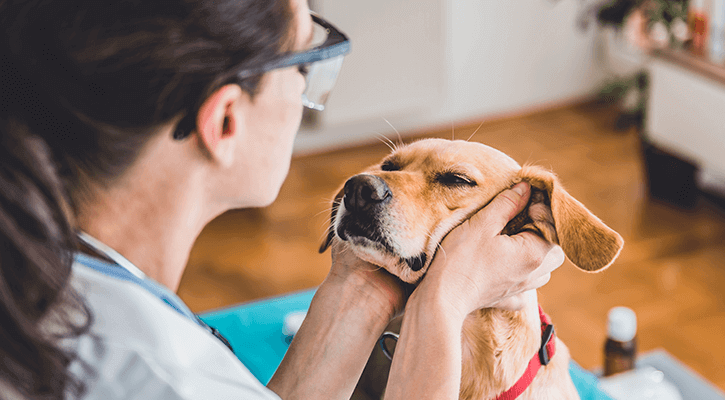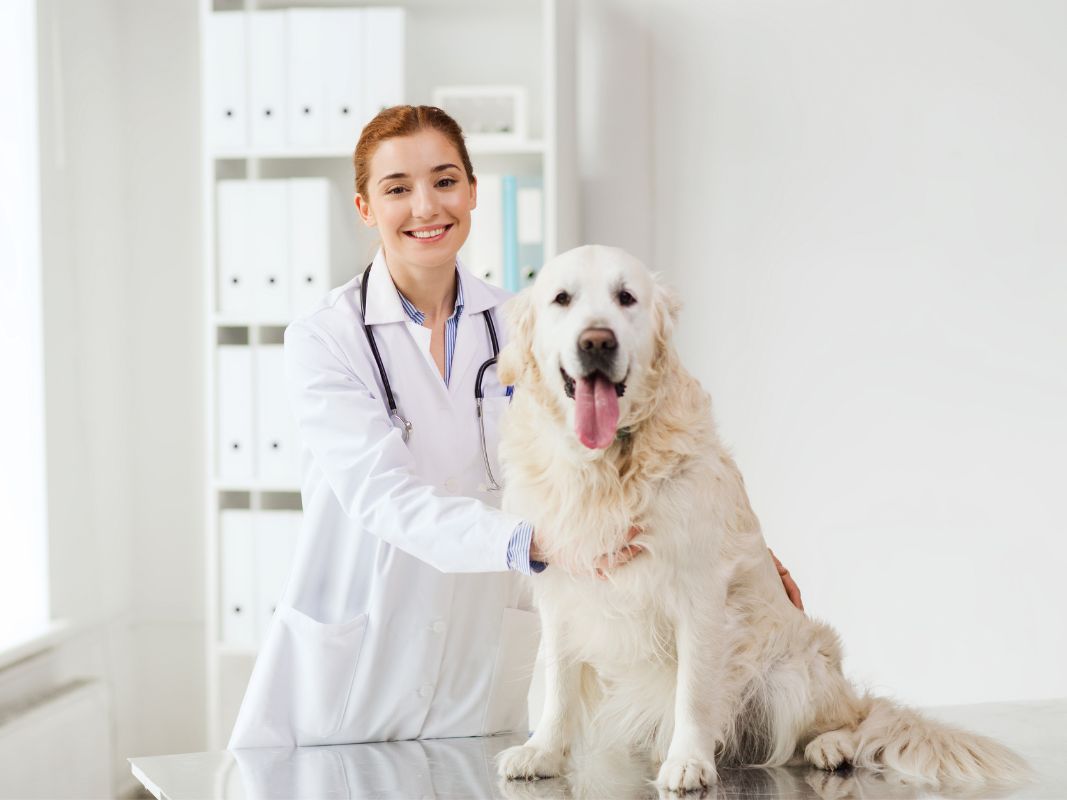What Happens During a Visit to an emergency vet? Step-by-Step Walkthrough
What Happens During a Visit to an emergency vet? Step-by-Step Walkthrough
Blog Article
Everything About Veterinarian Surgical Procedure: Understanding the Value of Specialist Treatment for Your Family pets
Veterinary surgical procedure is a vital part of animal medical care. It encompasses different procedures, from regular optional surgeries to urgent interventions. Understanding the intricacies of these surgical treatments can assist family pet owners make notified choices. The prep work, execution, and recuperation phases are necessary for ensuring the health of animals. With correct knowledge, owners can navigate the complexities of vet care. What aspects should be taken into consideration before a pet dog goes through surgical treatment?
Sorts Of Veterinarian Surgeries
When an animal requires surgical treatment, recognizing the various kinds of vet surgical treatments can assist family pet proprietors make notified decisions. Veterinary surgical procedures can be extensively categorized right into three primary types: elective, urgent, and emergency surgical procedures. Elective surgical treatments, such as spaying or neutering, are prepared procedures that are not instantly life-threatening. Immediate surgeries, like those for foreign body elimination, have to be performed soon yet are not dangerous in the minute. Emergency situation surgical treatments, such as those addressing severe trauma or inner bleeding, are critical and require prompt attention.Additionally, surgical treatments can vary in intricacy, ranging from minimally invasive laparoscopic treatments to a lot more considerable open surgeries. Each kind of surgery lugs its own threats and recuperation processes. Understanding these categories permits pet proprietors to engage in purposeful conversations with veterinarians, causing much better end results for their precious animals.
Planning for Your Pet dog's Surgical procedure
Preparing for an animal's surgical procedure involves a comprehensive checklist to guarantee all fundamentals are covered. Reliable communication with the veterinarian is vital for recognizing the procedure and any needed pre-operative actions - emergency vet bellingham. In addition, having clear post-operative treatment instructions will certainly assist owners offer the finest support for their recouping pets
Pre-Surgery List Basics
Guaranteeing a smooth surgical experience for a family pet calls for cautious preparation and focus to information. A pre-surgery checklist is necessary for pet proprietors to comply with. Initially, confirming the scheduled surgical treatment day and time is essential. Owners ought to likewise validate that their pet has actually not eaten according to the veterinarian's guidelines, commonly for 8-12 hours prior to surgical treatment. Gathering required medical records, consisting of inoculation history, is essential for the veterinarian's evaluation. It is likewise advisable to prepare a comfortable space in the house for the pet's recuperation after surgical procedure. Proprietors should have a strategy for transport to and from the veterinary center, making certain that the pet is protected and comfy throughout the trip. Complying with these actions can significantly enhance the surgical experience.
Connecting With Your Vet

Effective communication with the vet is necessary for an effective surgical experience for pet dogs. Owners should be prepared to review their animal's case history, consisting of any type of pre-existing problems, medications, and allergies. This information aids the vet assess threats and tailor the surgical plan accordingly. Additionally, family pet proprietors ought to ask inquiries regarding the procedure, anesthesia, and anticipated results to ensure they totally understand the process. Clarifying any doubts can ease stress and anxiety for both the pet and the owner. It is likewise essential to interact any kind of behavior modifications or worries observed in the pet dog leading up to the surgery. Eventually, clear discussion fosters trust and partnership, making certain that pet dogs get the finest feasible treatment during their medical trip.
Post-Operative Care Directions
After discussing the surgery with the veterinarian, family pet owners ought to concentrate on post-operative treatment guidelines to assist in a smooth healing for their pet dogs. These guidelines usually consist of checking the medical site for signs of infection, such as inflammation or discharge. Pets might need to be kept calm and constrained to protect against excessive motion that might interfere with healing. Discomfort monitoring is crucial, so owners must comply with the vet's guidance on providing medicines. Additionally, dietary restrictions may be advised to stay clear of stomach trouble. Normal follow-up appointments are essential to guarantee appropriate healing and attend to any type of problems. By sticking to these post-operative care guidelines, pet proprietors can substantially add to their family pet's healing and total well-being.
The Surgery Explained
The medical process for pets incorporates crucial steps that assure their safety and recuperation. Pre-surgery prep work are vital for reducing risks, while post-operative care guidelines play a crucial duty in promoting healing. Recognizing these components helps animal proprietors navigate the medical experience better.
Pre-Surgery Preparations
Prior to a pet undergoes surgery, numerous essential preparations have to take location to assure a secure and successful procedure. A comprehensive vet evaluation is vital to examine the animal's total health and wellness and recognize any kind of potential threats. This might consist of blood examinations, imaging, or other diagnostics. The vet will likewise review anesthesia choices tailored to the pet's specific requirements. In addition, animal owners are normally advised to keep food and water for a defined time before surgical treatment to reduce the threat of problems throughout anesthetic. It is very important for proprietors to supply a total clinical background, consisting of any kind of medications or allergies, ensuring the medical group has all required info. Proper communication and adherence to pre-surgery standards can greatly enhance the result of the treatment.
Post-Operative Care Guidelines
Correct post-operative care is read more essential for making sure a family pet's recuperation complying with surgical procedure. After the procedure, family pets must be monitored closely for any type of indications of difficulties, such as too much bleeding, swelling, or uncommon habits. It is essential to follow the veterinarian's directions concerning medicines, including discomfort relievers and prescription antibiotics. Family pets need to be kept in a silent, comfortable environment to minimize tension and promote recovery. Limiting task is important; short, leashed strolls may be needed, however leaping or running need to be prevented. Regular follow-up appointments need to be scheduled to examine the recovery process. Additionally, the surgical site has to be kept tidy and dry, with any type of indicators of infection reported to a vet immediately. Adhering to these standards boosts healing end results.
Anesthesia and Pain Administration
Reliable anesthesia and pain administration are important parts of vet surgical treatment, guaranteeing that pets stay comfy and risk-free throughout the treatment. Vets assess each family pet's specific requirements, taking into account factors such as age, weight, wellness condition, and the sort of surgery being performed.Anesthesia methods generally consist of a combination of pre-anesthetic drugs, induction representatives, and inhalant anesthetics, allowing for precise control over the animal's degree of awareness. Tracking throughout surgical procedure is important; veterinarians continuously observe important signs to deal with any prospective issues promptly.Pain management techniques may include opioids, non-steroidal anti-inflammatory medicines (NSAIDs), and anesthetics, tailored to the family pet's specific situation. This diverse technique helps decrease pain and promotes a smoother surgical experience. By focusing on reliable anesthesia and pain monitoring, vet specialists improve the general welfare of pets undergoing medical procedures, ensuring they obtain the highest standard of treatment.
Post-Operative Treatment and Recuperation
Complying with surgical procedure, the focus shifts to post-operative care and recovery, which is important for ensuring a pet's safe go back to typical activities. During this period, pet dogs call for a quiet, comfy environment to help recovery. Proprietors need to very closely monitor their animals for any type of signs of pain or uncommon behavior.Veterinary guidelines often include specific guidelines connected to medicine management, injury treatment, and nutritional changes. It is essential to abide by these recommendations to decrease problems and promote healing. Family pets might need to be limited from vigorous tasks, such as running or jumping, throughout their recuperation period (veterinary cardiologist near me).Regular follow-up appointments with the vet permit tracking of the animal's development and prompt modifications to the treatment plan. Giving psychological support and companionship can also improve a pet's recovery experience, helping to ease stress and anxiousness. On the whole, attentive post-operative care plays a significant role in achieving an effective recuperation
Acknowledging Complications After Surgery
Exactly how can family pet proprietors recognize issues after surgery? Recognition of certain signs is necessary for making certain the well-being of animals throughout recovery. Usual indications include excessive swelling, inflammation, or discharge at the medical website, which may symbolize infection. In addition, relentless discomfort, shown by whining or unwillingness to relocate, need to prompt instant attention. Adjustments in cravings or water consumption can likewise suggest complications; a decline in these behaviors might signify pain or distress.Moreover, family pet proprietors need to monitor their family pets for any kind of uncommon actions, such as sleepiness or problem breathing, as these can be indicators of major issues. Vomiting or diarrhea complying with surgery may need urgent vet assessment. Acknowledging these problems early can considerably influence an animal's recovery procedure, highlighting the significance of vigilance and punctual communication with a veterinarian for any type of worrying signs.
The Function of Veterinary Professionals in Surgical Care
Vet experts play a vital duty in ensuring the safety and security and success of surgeries for pets, especially complying with surgical treatment when monitoring and care are extremely important. These experts include vets, vet professionals, and assistance staff, all of whom contribute specialized abilities to the medical process.Before surgical procedure, veterinarians conduct comprehensive examinations to assess the family pet's health and wellness, ensuring that any hidden conditions are managed. Throughout the treatment, the surgical group offers anesthetic, preserves sterilized settings, and monitors essential signs, very important for decreasing risks.Post-operative care is just as substantial; vet professionals observe for problems, take care of pain, and overview proprietors on recuperation methods. Their competence enables them to acknowledge very early indications of distress or infection, guaranteeing timely intervention. Eventually, the joint initiatives of veterinary specialists in medical treatment foster a risk-free setting, advertising the well-being of pet dogs throughout the surgical trip.

Regularly Asked Questions
How Do I Pick the Right Vet Cosmetic Surgeon for My Pet?
Choosing the appropriate veterinary surgeon entails researching qualifications, reading evaluations, and examining the facility's setting. It is necessary to review the cosmetic surgeon's experience with specific treatments and their interaction design when deciding.
What Prevail Misconceptions Regarding Veterinarian Surgeries?
Usual misunderstandings concerning veterinarian surgical treatments include ideas that they are always high-risk, unneeded, or just for emergency situations. Several animal proprietors underestimate the advantages of preventive treatments and the ability associated with veterinary medical care.
Just How Much Will My Family pet's Surgical procedure Price?
The expense of an animal's surgical treatment can vary significantly based on aspects such as the kind of treatment, the veterinarian's experience, and geographic area (tplo surgery). Commonly, costs range from a few hundred to several thousand dollars

Can My Pet Eat Prior To Surgery?
Before surgical treatment, it is generally encouraged that family pets avoid eating for a certain duration. This fasting aids minimize the danger of problems during anesthetic. Proprietors should consult their vet for exact directions tailored to their family pet's requirements.
Suppose My Pet Dog Has Pre-Existing Wellness Conditions?
When an animal has pre-existing health conditions, it's crucial for the vet to evaluate these aspects before surgical procedure. This analysis warranties appropriate precautions are taken, lessening risks and optimizing the family pet's total security during the procedure.
Report this page